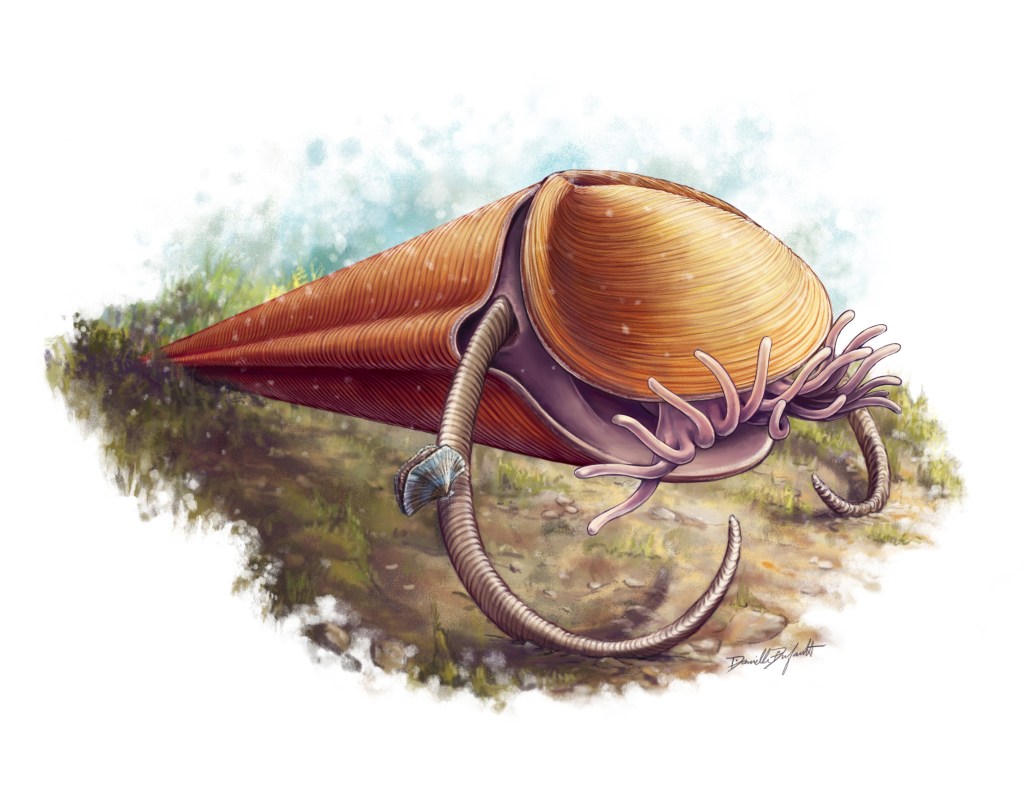Birds have evolved an extraordinary range of vocalizations, from the mimicry skills of the lyrebird to the iconic call of the hawk. The secret of this acoustic diversity is a specialized avian vocal organ called the syrinx, which produces sounds with vibrating membrane folds attached to cartilaginous rings. Because preserved syrinxes are rare in the fossil record, the origin of this anatomical innovation has been a longstanding mystery for paleontologists.
Now, research published Wednesday in Nature sheds light on the elusive dawn of birdsong in the age of the dinosaurs. Led by Julia Clarke, a paleontologist based at the UT Austin’s Jackson School of Geosciences, the paper describes the oldest fossilized syrinx ever found. Belonging to the early bird Vegavis iaai, the specimen dates back 66 to 68 million years to the tail end of the Cretaceous period.
Videos by VICE
This holotype was first discovered on Antarctica’s Vega Island in 1992, but it wasn’t until 2013 that Clarke noticed it included the remains of a syrinx. By analyzing the structure of the organ with X-ray computed tomography and cross-referencing it with the syrinxes of 12 living birds, Clarke and her co-authors were able to narrow down the properties of the extinct bird’s bygone song.
“What we’re looking at is closely related taxa and closely related species like ducks and geese so we can say: ‘Okay, here’s the range of variation in this particular syrinx in terms of frequency and acoustic characteristics it could have generated,’” Clarke told me over the phone.

Infographic showing variation in vocal anatomy in dinosaurs, birds, and alligators. Image: Nicole Fuller/Sayo Art for UT Austin
The team found that the fossil’s left and right vocal folds were asymmetrically positioned in a similar fashion to the anatomy of modern ducks and geese, suggesting that Vegavis iaai might have made honking sounds like its extant relatives. Clarke is currently collaborating with an interdisciplinary group of specialists to construct working models of this ancient syrinx capable of simulating the sounds once made by the Cretaceous bird.
“We’re working with a fabulous engineering group,” she said. “Our big dream is partnering with various museums to build replicas that kids or adults could manipulate, and see what the effect is on vocal production.”
READ MORE: Birdsongs and People-Songs Share the Same Math
This would be an immersive way to interact with the speculative soundscapes of the late Cretaceous period, during the relative calm before the storm that was unleashed by the asteroid impact that killed off every dinosaur lineage except birds 66 million years ago.
Indeed, on an even broader note, unraveling the origins of the syrinx can help paleontologists make educated guesses about the vocal behavior of the bird family’s ill-fated cousins. For instance, the fact that no syrinxes have been found in non-avian dinosaur fossils of the same age as Vegavis iaai suggests that this might be an adaptation that is unique to birds.
“We have a ways to go in terms of the science, but we’re looking into what sounds different sizes of dinosaur may [have been] capable of if they had a syrinx or if they had a larynx,” Clarke said. “Those are the kinds of things we need to figure out.”
In recent years, paleontologists have been able to unlock incredible details about dinosaurs, including the colors of their scales and feathers. With this new research, it seems we may be on the brink of potentially reconstructing their voices as well, breaking a silence that has lasted for millions of years.
Get six of our favorite Motherboard stories every day by signing up for our newsletter.



